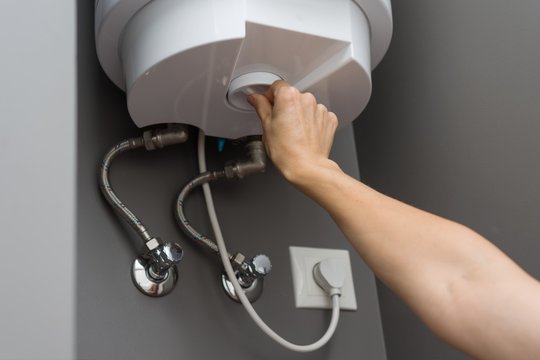Ways to Properly Care for Your Home's Hot Water System
Ways to Properly Care for Your Home's Hot Water System
Blog Article
Just about everyone has their own unique views with regards to Tips For Maintaining Your Hot Water Heater.

Hot water is crucial for daily comfort, whether it's for a revitalizing shower or washing meals. To ensure your warm water system runs effectively and lasts much longer, routine maintenance is vital. This article gives practical tips and understandings on how to keep your home's hot water system to prevent interruptions and costly fixings.
Introduction
Keeping your home's warm water system might seem daunting, however with a few straightforward steps, you can guarantee it operates efficiently for several years to find. This guide covers every little thing from recognizing your hot water system to DIY upkeep suggestions and understanding when to hire professional assistance.
Relevance of Preserving Your Hot Water System
Regular maintenance not only prolongs the life expectancy of your hot water system but also ensures it runs effectively. Overlooking maintenance can lead to lowered efficiency, greater energy costs, and even premature failing of the system.
Signs Your Warm Water System Demands Maintenance
Recognizing when your warm water system needs interest can avoid significant issues. Watch out for indicators such as irregular water temperature, odd noises from the heater, or corroded water.
Understanding Your Warm Water System
Before diving into upkeep jobs, it's handy to understand the basic parts of your warm water system. Generally, this consists of the hot water heater itself, pipes, anode poles, and temperature level controls.
Month-to-month Maintenance Tasks
Regular regular monthly checks can assist capture minor problems before they intensify.
Purging the Hot Water Heater
Purging your hot water heater removes sediment accumulation, enhancing performance and lengthening its life.
Monitoring and Changing Anode Rods
Anode poles avoid rust inside the storage tank. Checking and changing them when broken is critical.
Evaluating and Adjusting Temperature Setups
Changing the temperature settings guarantees ideal performance and safety.
Do It Yourself Tips for Upkeep
You can do a number of maintenance tasks yourself to keep your hot water system in top condition.
Checking for Leakages
Regularly inspect pipelines and links for leaks, as these can cause water damages and higher bills.
Testing Pressure Alleviation Valves
Evaluating the stress relief valve ensures it functions correctly and avoids extreme stress build-up.
Insulating Pipelines
Protecting warm water pipelines reduces warm loss and can save power.
When to Call a Specialist
While DIY maintenance is beneficial, some concerns call for specialist experience.
Complicated Problems Requiring Specialist Assistance
Examples consist of significant leaks, electrical troubles, or if your water heater is consistently underperforming.
Regular Expert Maintenance Perks
Professional maintenance can include comprehensive inspections, tune-ups, and making certain conformity with safety and security standards.
Conclusion
Routine upkeep of your home's warm water system is important for performance, longevity, and price savings. By adhering to these suggestions and recognizing when to seek specialist assistance, you can guarantee a dependable supply of warm water without unforeseen disturbances.
How to Maintain an Instant Hot Water Heater
Before tinkering with your hot water heater, make sure that it’s not powered on. You also have to turn off the main circuit breaker and shut off the main gas line to prevent accidents. Also turn off the water valves connected to your unit to prevent water from flowing into and out of the appliance. 2. When you’re done, you have to detach the purge valves’ caps. These look like the letter “T†and are situated on either side of the water valves. Doing so will release any pressure that has accumulated inside the valves while at the same time avoid hot water from shooting out and burning your skin. 3. When the purge valves’ caps are removed, you have to connect your hosing lines to the valves. Your unit should have come with three hoses but if it didn’t, you can purchase these things from any hardware or home repair shops. You can also get them from retail stores that sell water heating systems. Read the user’s manual and follow it to complete this task properly. When the hosing lines are connected, open the purge port’s valves. 4. You should never use harsh chemical cleaners or solutions when cleaning your unit. Make use of white vinegar instead. It should be undiluted and you’ll probably use about 2 gallons. 5. Now flush your water heater. This task should probably take about 40 minutes. We can’t give you specific directions for this because the procedure is carried out depending on the type, model and brand of your heater. With that being said, refer to the user’s manual. 6. When you’re done draining the unit, you have to turn off the purge port valves again. Remove the hosing lines that you earlier installed on each of the water valves. Put the valve caps (purge port) back in their respective places and be very careful so as not to damage the rubber discs that are found inside these caps. 7. Now that everything’s back in place, check your user’s manual again to find out how to reactivate your water heating system. 8. Once it is working, turn one of your hot water faucets on just to let air pass through the heater’s water supply pipes. Leave the tap on until water flows smoothly out of it. https://www.orrplumbing.com/blog/2014/september/how-to-maintain-an-instant-hot-water-heater/

We were guided to that write-up about Tips on Maintaining a Water Heater through a friend on a different web address. Liked our piece? Please quickly share it. Let other people check it out. We treasure reading our article about How to Maintain a Hot Water Heater in a Few Simple Steps.
View Report this page